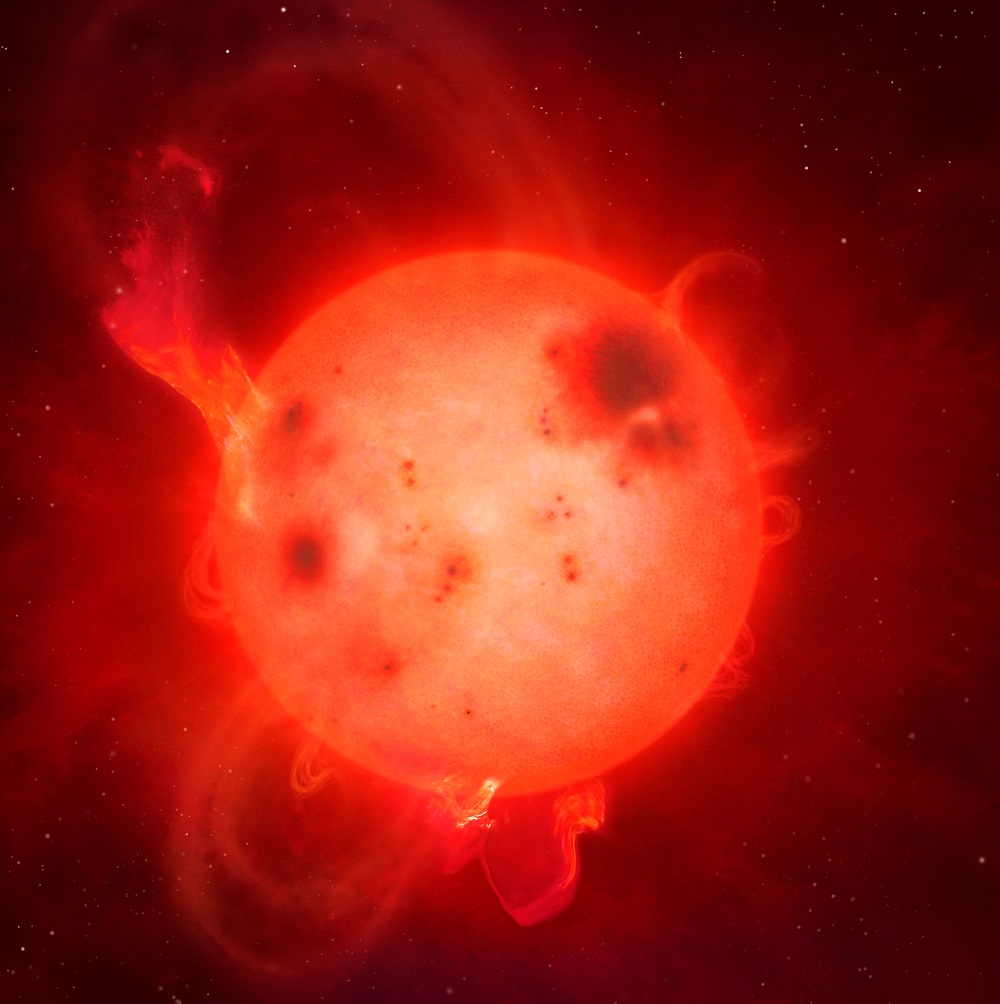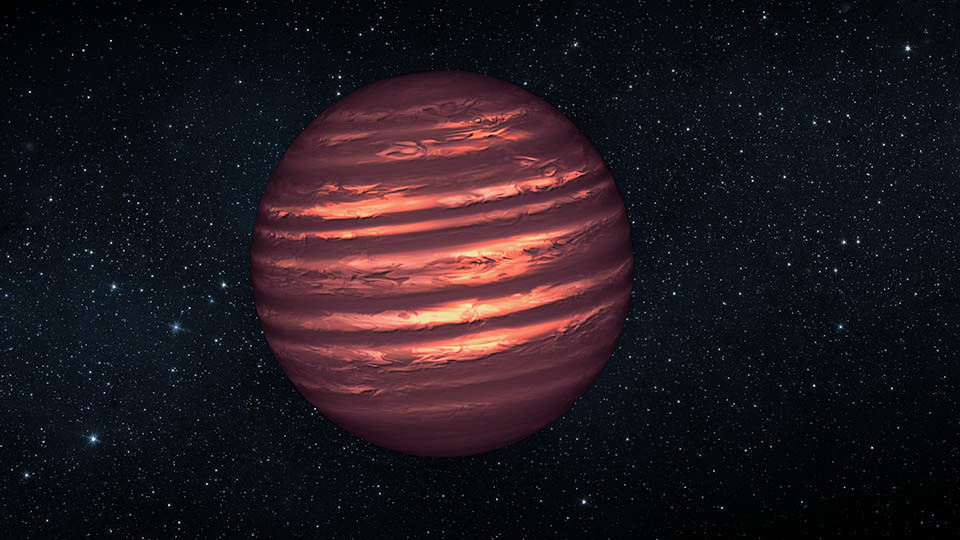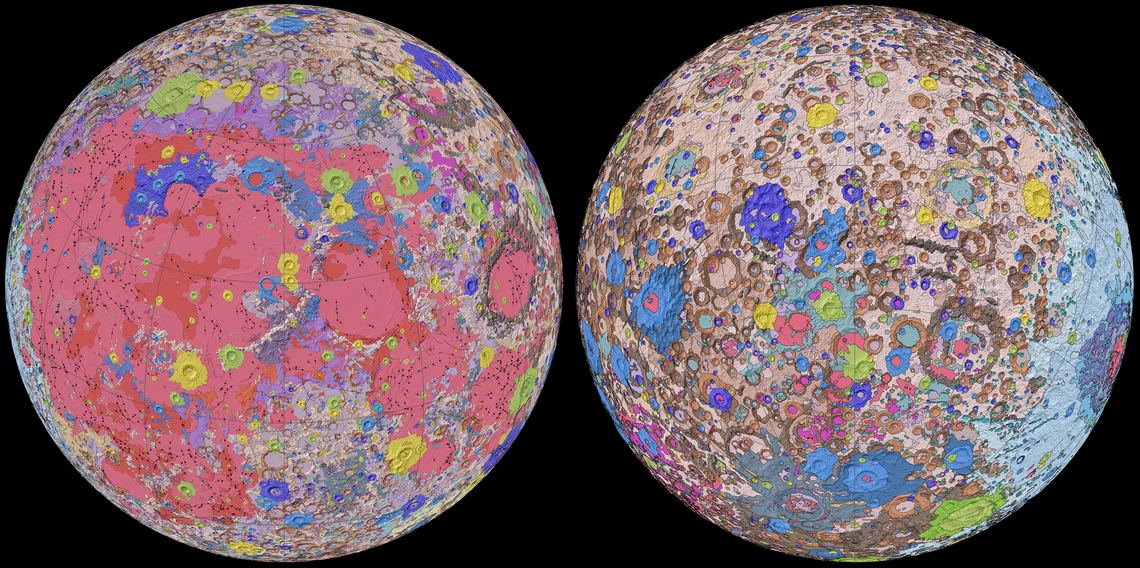So, you think you know Galileo? A new book out from Simon and Schuster publishing looks at the exploits of one of the most famous astronomers there ever was: Galileo Galilei. Galileo and the Science Deniers by Dr. Mario Livio not only looks at the life and times of the famous astronomer, but busts some of the most famous myths surrounding Galileo, and looks at his greatest discoveries and tempestuous clash with the Roman Catholic Church and its aftermath. Livio also connects the science denialism of the day with comparisons to modern clashes between politics and science.
Continue reading “Review: Galileo and the Science Deniers by Mario Livio”When Did Mars Lose its Global Magnetic Field?

Billions of years ago, Mars was once a much different place than the cold and desiccated place it is today. Basically, it had a thicker, warmer atmosphere and liquid water flowing on its surface, and maybe even life! The reason for this is because, like Earth, Mars had a planetary magnetic field that was generated by action in its core. But when that field disappeared, things began to change drastically!
For years, scientists believed that this field disappeared over 4 billion years ago, causing Mars’ atmosphere to be slowly stripped away by solar wind. But according to new research led by the University of British Columbia (UBC) has placed new constraints on when this magnetic field disappeared, indicating that Mars’ magnetic field existed sooner (and laster hundreds of millions of years longer) than previously thought.
Continue reading “When Did Mars Lose its Global Magnetic Field?”More Pictures of Planet-Forming Disks Around Young Stars

Astronomy is advancing to the point where we can see planets forming around young stars. This was an unthinkable development only a few years ago. In fact, it was only two years ago that astronomers captured the first image of a newly-forming planet.
Now there are more and more studies into how planets form, including a new one with fifteen images of planet-forming disks around young stars.
Continue reading “More Pictures of Planet-Forming Disks Around Young Stars”Our Review of Stellina: a ‘Smart Telescope’ for 21st Century Astronomy
Stellina may usher in a revolution in amateur astronomy.
It’s a common scene at star parties, post-Christmas. As darkness falls, someone approaches us with a new telescope, often in still unassembled. “I can’t figure this thing out,” is the inevitable refrain. “Can you show me how to use this @#$%! thing?”
Continue reading “Our Review of Stellina: a ‘Smart Telescope’ for 21st Century Astronomy”In the far future, the universe will be mostly invisible

If you look out on the sky on a nice clear dark night, you’ll see thousands of intense points of light. Those stars are incredibly far away, but bright enough to be seen with the naked eye from that great distance – a considerable feat. But what you don’t see are all the small stars, the red dwarfs, too small and dim to be seen at those same distances.
Continue reading “In the far future, the universe will be mostly invisible”SpaceX Describes Exactly How They’re Planning to Make Starlink Satellites Less Visible From Earth
In 2015, Elon Musk announced that his company, SpaceX, would be deploying satellites to orbit that would provide high-speed broadband internet access to the entire world. Known as Starlink, SpaceX began deploying this constellation in May of 2019 with the launch of the first 60 satellites. As of April 22nd, a total of 422 satellites have been added to the Starlink constellation, and the response hasn’t been entirely positive.
In addition to fears that we’re adding to the problem of “space junk,” there are also those who’ve expressed concern that Starlink and other constellations could have a negative impact on astronomy. In response, SpaceX recently announced that it will be instituting changes in how the satellites are launched, how they orbit the Earth, and even how reflective they are in order to minimize the impact they have on astronomy.
Continue reading “SpaceX Describes Exactly How They’re Planning to Make Starlink Satellites Less Visible From Earth”Astronomers Can Actually See the Clouds and Weather on Brown Dwarf 6.5 Light-Years Away

Brown dwarfs are in a tough spot. Not quite a star, not quite a planet, they occupy a place between gas giants and stars. They have more mass than gas giants like Jupiter, but not enough to ignite fusion and become a star.
But astronomers still study them. How could they resist?
Continue reading “Astronomers Can Actually See the Clouds and Weather on Brown Dwarf 6.5 Light-Years Away”Astronomers Find a Planet With Three Times the Mass of Jupiter

Jupiter is the Boss.
Well, in terms of planets in our Solar System it is. It’s played a huge role in shaping the Solar System due to its mass and its gravity. Here’s a few ways it’s shaped our system:
Continue reading “Astronomers Find a Planet With Three Times the Mass of Jupiter”The Sun is less active magnetically than other stars
Our Sun is the source of life on Earth. Its calm glow across billions of years has allowed life to evolve and flourish on our world. This does not mean our Sun doesn’t have an active side. We have observed massive solar flares, such as the 1859 Carrington event, which produced northern lights as far south as the Caribbean, and drove electrical currents in telegraph lines. If such a flare occurred in Earth’s direction today, it would devastate our electrical infrastructure. But fortunately for us, the Sun is mostly calm. Unusually calm when compared to other stars.
Continue reading “The Sun is less active magnetically than other stars”Want to Mine the Moon? Here’s a Detailed Map of all its Minerals

The prospect of mining asteroids and the Moon is on a lot of peoples’ minds lately. Maybe it’s all the growth that’s happened in the commercial aerospace industry in the past few decades. Or perhaps it’s because of Trump’s recent executive order to allow for asteroid and lunar mining. Either way, there is no shortage of entrepreneurs and futurists who can’t wait to start prospecting and harvest the natural bounty of space!
Coincidentally enough, future lunar miners now have a complete map of the lunar surface, which was created by the US Geological Society’s (USGS) Astrogeology Science Center, in collaboration with NASA and the Lunar Planetary Institute (LPI). This map shows the distribution and classification of the mineral deposits on the Moon’s surface, effectively letting us know what its familiar patchwork of light and dark patches the really are.
Continue reading “Want to Mine the Moon? Here’s a Detailed Map of all its Minerals”



